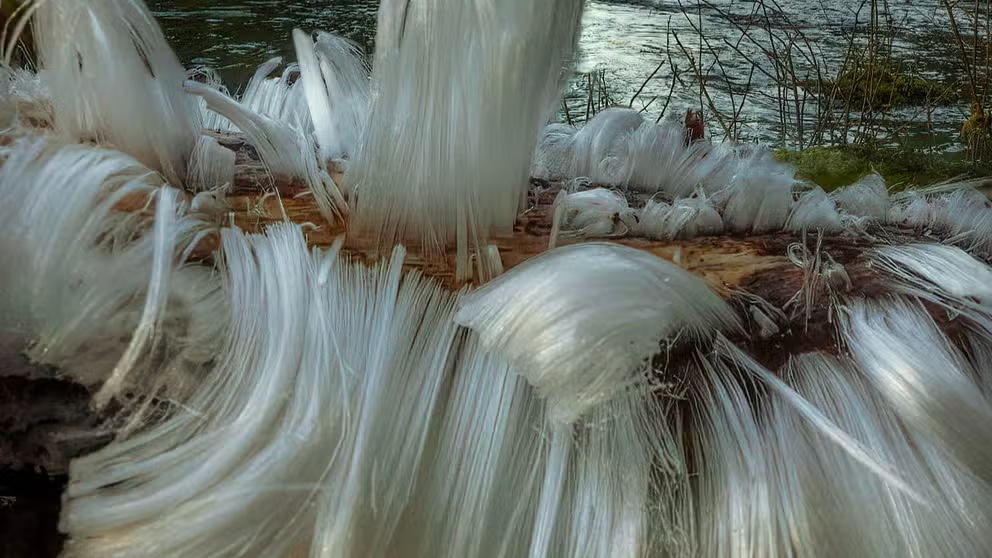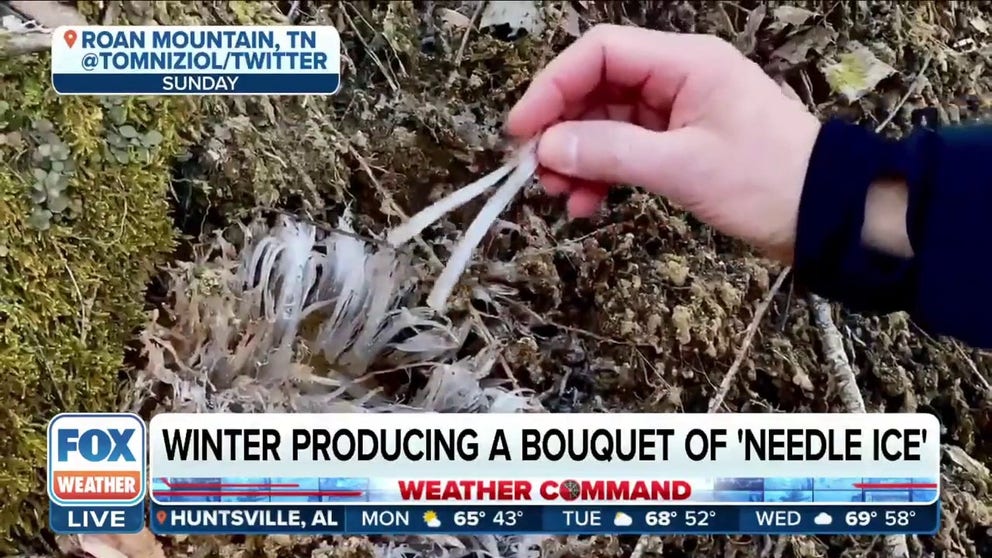Watch: Surreal 'hair ice' grows from dead branch on frozen Washington morning
Nature photographer Mathew Nichols just spent a few chilly nights in the woods of northwestern Washington documenting the surreal formation of "hair ice," which can be found when conditions are just right in the winter.
Watch: Time lapse video shows formation of "hair ice" in Washington
A recent frozen winter morning in northwestern Washington led to this intricate display of hair ice. (Video courtesy: Mathew Nichols Photography)
FORKS, Wash. – It's indeed a strange sight when a piece of dead wood can still grow a frozen beard.
Nature photographer Mathew Nichols spent a few chilly nights this winter in the woods of Washington's Hoh Rainforest in Olympic National Park, documenting the surreal formation of "hair ice" – also known as "needle ice" or "beard frost" – which can be found when cold conditions are just right.
Nichols, who spends quite a bit of time outdoors, has seen these odd-looking branches that have icy needles protruding from the branch. How did they get there? You need the right kind of wood and the right kind of fungus.
7 FACTS ABOUT U.S. NATIONAL PARKS
"Hair Ice is caused by a fungus that lives within the decaying wood, and this fungus 'breathes' or releases its spores through the night, pushing the moisture harnessed within the wood out of the wood's pores, causing it to immediately freeze with contact of the below freezing temperatures," Nichols said.
As the fungus' "breath" continues to freeze through tiny pores, long, thin strands of ice form, which in the aggregate, appear to look like hair.
Nichols wanted time-lapse video to show how they form and melt, but this was no easy photo shoot.

"Hair Ice" grows on a dead branch in the woods of northwestern Washington in March.
(Mathew Nichols Photography / FOX Weather)
First, he had to wait until the right weather conditions were present. He had taken extensive notes during previous encounters on the temperature, humidity, cloud cover and wind needed for hair ice formation. He also learned the best wood to find hair ice was dead alder branches.
"From there, I waited for the right conditions to occur again," Nichols said. "I wanted to not only know what caused it, but I also wanted to see it grow."
7 WEATHER EXTREMES EXPERIENCED AT NATIONAL PARKS
On this day, Nichols said ambient temperatures were about 33 degrees but closer to 31 along the ground. Skies were clear, the wind was calm and the humidity was around 90%.
Once these "golden zone" weather conditions were met, Nichols headed out with his phone camera and found a branch that had shown hair ice before.
"I ran into so many problems with this plan," he said. "My phone would get too cold and shut off, the battery would drain too fast, and the lighting was very difficult to make work. So I taped hand warmers to my phone and plugged it into a battery pack, and then used a few lanterns to provide the proper lighting."
Needle ice: What is it?
FOX Weather found a bouquet of needle ice. Weather Command meteorologists explain the phenomenon.
It took at least a dozen attempts before he was finally able to capture a time-lapse video from start to finish.
Then after posting on social media, the hard drive where he ended up storing the large file froze and lost the original files. It'll likely mean another trip to the forest soon to recapture the magic.
"I will always have a special place in my heart for this unique phenomenon and will never walk past it without taking some time to admire its beauty first," he said.

